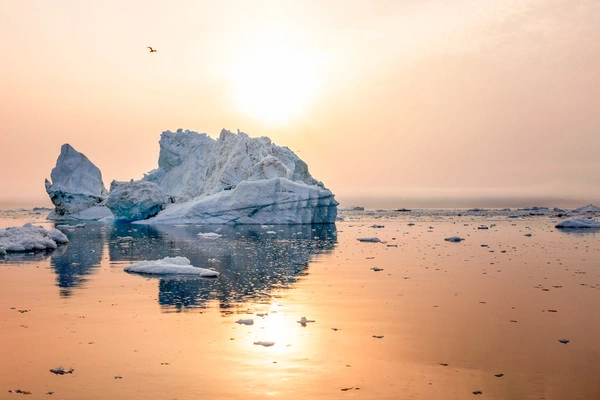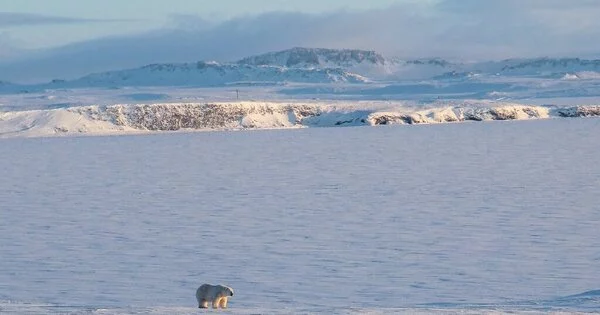According to a new analysis of observed temperatures, the Arctic is warming four times faster than the rest of the world. The trend has stepped up steeply twice in the last 50 years, a finding that all but four of the 39 climate models missing.
“Thirty years is considered the minimum to represent climate change,” said Petr Chylek, lead author of the study published in Geophysical Research Letters and a physicist and climate researcher at Los Alamos National Laboratory. “We shortened the time span to 21 years. At that smaller time scale, and in contrast to previous studies that found the Arctic amplification index increasing in a smooth fashion, we found two distinct steps, one in 1986 and the other in 1999.”
Because the decade-by-decade episodic trend identified by Chylek and his colleagues affects global weather and sea levels, accurately projecting future climate change in smaller timeframes is critical for planning mitigation and adaptation strategies. The Arctic has an impact on the global climate and weather, and the melting of the Greenland ice sheet causes sea-level rise, which threatens many coastal communities.
We attributed the first step to increasing concentrations of carbon dioxide and other pollutants in the atmosphere, because several models do it correctly, but the second step we think is due to climate variability because none of the models can reproduce the second step.
Petr Chylek
The amplification index in the study is the ratio of an Arctic 21-year temperature trend versus an overall global 21-year temperature trend. The study calculated the Arctic amplification index to be greater than 4 within the early decades of the 21st century, four times faster than the global mean and considerably more rapid than previously published research had determined using 30- to 40-year time intervals. These earlier studies pegged the index between 2 and 3.
From 39 climate-change models in the widely used CMIP6 collection of the Coupled Model Intercomparison Project, the international research team found four that reproduced the first step reasonably well around 1986, but none that reproduced the second step in 1999. The Climate Model Intercomparison Project (CMIP) is an international collaboration of climate models that use a common set of parameters. The most recent Intergovernmental Panel on Climate Change Assessment Report was created using CMIP6.

“We attributed the first step to increasing concentrations of carbon dioxide and other pollutants in the atmosphere because several models do it correctly,” Chylek said, “but the second step we think is due to climate variability because none of the models can reproduce the second step.”
Climate models, with their 30-year-plus timescales, typically miss short-term climate variability. The study does not pinpoint a cause for these relatively sudden increases, but the authors speculate that sea-ice and water-vapor feedbacks, combined with changes in how atmospheric and oceanic heat move into the Arctic, are likely contributing causes. As the temperature difference between the Arctic and the tropics narrows, future increases in the Arctic amplification index are likely to be smaller.
Valuable for projecting change in the Arctic
Chylek stated that the next step for the research team will be to look at future Arctic climate projections using the four models that came closest to matching the observed warming trend with the spikes.
“Because the four models correctly reproduce at least the first step,” Chylek explained, “we assume they’re a little better for future climate projection.” “People usually average all models and assume the ensemble is more reliable than any single model. We demonstrate that the average does not work in this case.”
The researchers used simulations output from climate models in the CMIP6 collection and downloaded publicly available temperature data for the Arctic from the internet.
“People are not only interested in long-term climate change, but they are also interested in 10 years ahead, 20 years, 30 years. For decadal prediction our observation that the amplification index changed in the past in steps is quite important,” Chylek said.
According to the researchers, no matter what the exact ratio of amplification is, its impact is undeniable. Thawing permafrost is threatening Indigenous villages, summer sea ice is melting, and record amounts of water are sluicing off Greenland’s ice sheet.
According to Jacobs, who also works on NASA communications, the team sees the work as a cautionary tale. “When something changes as quickly as the climate, numbers can quickly become old and outdated,” he says. “You’re misinforming people by a factor of two before you realize it.”





